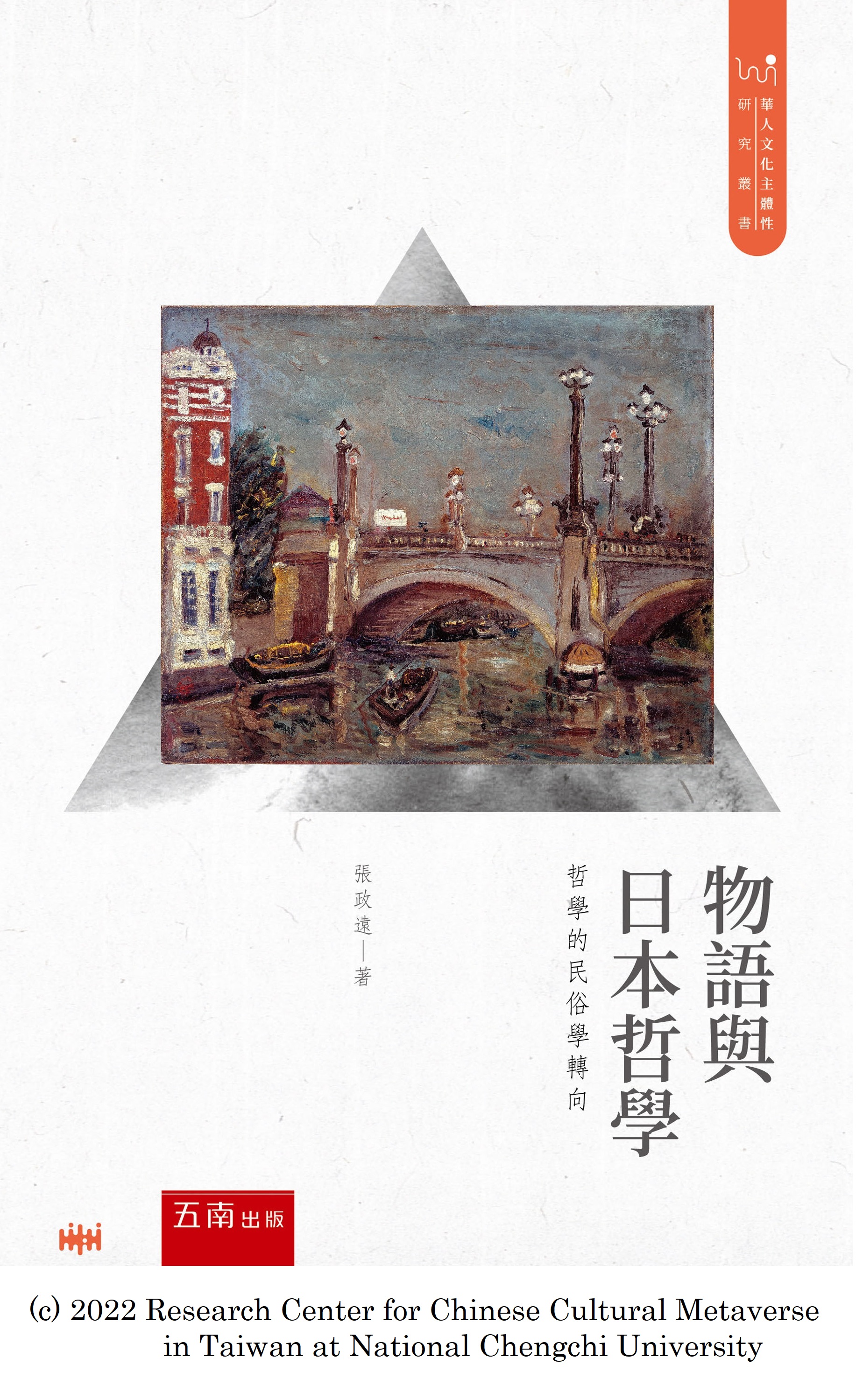
Title
Series Books on Research for Chinese Cultural Subjectivity 物語與日本哲學 (Monogatari and Japanese Philosophy - Folkloric turn in Philosophy)
Size
264 pages
Language
Chinese
Released
June 14, 2022
ISBN
978-626-317-636-2
Published by
Wu-nan Book Inc.
Book Info
Japanese Page
What is monogatari? In Chinese, it is usually translated as gùshi or xùshì. In Japanese, to tell (katari) is pronounced the same as to deceive. In this sense, katari is not essentially a statement of fact, but it can be something fictional. In other words, a monogatari is not the same as a story or an event. In Monogatari no Tetsugaku, Noe Keiichi points out that monogatari has two meanings. It can be "that which is narrated, a story," or it can be "the act or practice of narrating.” The first edition of the book had a subtitle "Yanagita Kunio and the Development of History," but this subtitle has been deleted in the paperback edition. Noe’s research theme is philosophy, not folklore or cultural anthropology. He has no intention to develop a theory of Yanagita. However, there seems to be an important relationship between Noe's philosophy of monogatari and Yanagita 's notion of monogatari. In the first chapter of Monogatari no Tetsugaku, Noe mentions Yanagita 's Tono Monogatari, which is strictly speaking not Yanagita 's own work, but rather a recollection of oral history in Tono, Iwate Prefecture. For example, Yanagita cites the story of a local man called Sasaki. A young man encountered a “mountain woman” when he was hunting in the mountains and shot her to death. He cut off a strand of the girl's hair to leave as evidence, but while taking a nap on his way down the mountain, a tall "mountain man" recaptured it. Although he has proof of the existence of neither the "mountain man" nor the "mountain woman," the story is passed down in the form of a tale. Also, at the time of the Great East Japan Earthquake, Noe was in Tokyo, but his house in Sendai was severely damaged. In the aftermath of the disaster, Noe tried to re-read Yanagita. The 1896 Sanriku Tsunami caused extensive damage to the Tohoku coast. Yanagita visited the tsunami affected in 1920. In Karakuwa Town and other areas, the scars of the tsunami were still visible, but he was heartbroken to see that nobody cared about the monuments written in Chinese. Literature was supposed to have immense power, but forgotten literature is powerless. While Yanagita fears that oral literature would lose its power due to the boom in modern printing, nowadays we can witness a tremendous pressure on the printing industry and a danger that oral literature will disappear. This is because we are gathering information via the internet and social network, rather than listening to or telling monogatari. Inspired by Noe's Monogatari no Tetsugaku, I decided to write a book titled Monogatari and Japanese Philosophy. In Japan, monogatari is generally thought to be related only to "literature" (e.g., Taketori Monogatari, The Tale of Genji, The Tale of the Heike") or "folklore" (e.g., Tono Monogatari). I would like to show how monogatari turns from literature and folklore to philosophy.
(Written by Cheung Ching Yuen, Associate Professor, Graduate School of Arts and Sciences / 2023)
Table of Contents
第一章 御進講與日本哲學 (Chapter 1: Philosophy for Emperor and Japanese Philosophy)
一、天皇的教養
二、西田幾多郎、和辻哲郎與高橋里美的進講
三、從「Philosophy for Emperor」到「Philosophy for Everyone」
第二章 九鬼周造論實存 (Chapter 2: Kuki Shuzo's Existential Philosophy)
一、存在、生存、實存
二、九鬼周造的「實存哲學」
三、偶然性與臺灣哲學
第三章 三木清的生與死 (Chapter 3: The Life and Death of Miki Kiyoshi)
一、三木清與西田幾多郎
二、技術哲學
三、死亡哲學
第四章 唐木順三的無常論 (Chapter 4: Karaki Junzo's Theory of Impermanence)
一、はかなし
二、無常
三、無常的形而上學
第五章 新渡戶稻造的平民道 (Chapter 5: Nitobe Inazo on Plebeianism)
一、新渡戶稻造
二、啟蒙與殖民
三、平民道與武士道的山
第六章 柳田國男的山人論 (Chapter 6: Yanagida Kunio's Theory of the Mountain People)
一、倫理
二、柳田的倫理學
三、啟示
第七章 柄谷行人的遊動論 (Chapter 7: Karatani Kojin's Theory of Mobility)
一、從批評到哲學
二、交換模式
三、雨傘運動與琉球獨立
第八章 吉本隆明的南島論 (Chapter 8: Yoshimoto Takaaki's Southern Island Theory)
一、獨立論
二、南島論
三、同祖論
第九章 和辻哲郎的巡禮哲學 (Chapter 9: Watsuji Tetsuro's Philosophy of Pilgrimage)
一、古寺巡禮
二、臺灣巡禮
三、哲學的民俗學轉向
第十章 貝爾克論風土的日本 (Chapter 10 Augustin Berque on the Milieu of Japan)
一、風土的日本
二、Ainu的風土
三、從terrior到terruño
第十一章 勞思光的臺港論 (Chapter 11: Lao Sze-kwang on Taiwan and Hong Kong)
一、臺灣
二、香港
三、危機
第十二章 鷲田清一的災後哲學論 (Chapter 12: Washida Kiyokazu's Post-Disaster Philosophy)
一、臨床哲學
二、哲學與災難
三、遊女與遊行婦女
結 論 (Conclusion)
參考文獻
人名索引
事項索引



 Find a book
Find a book

